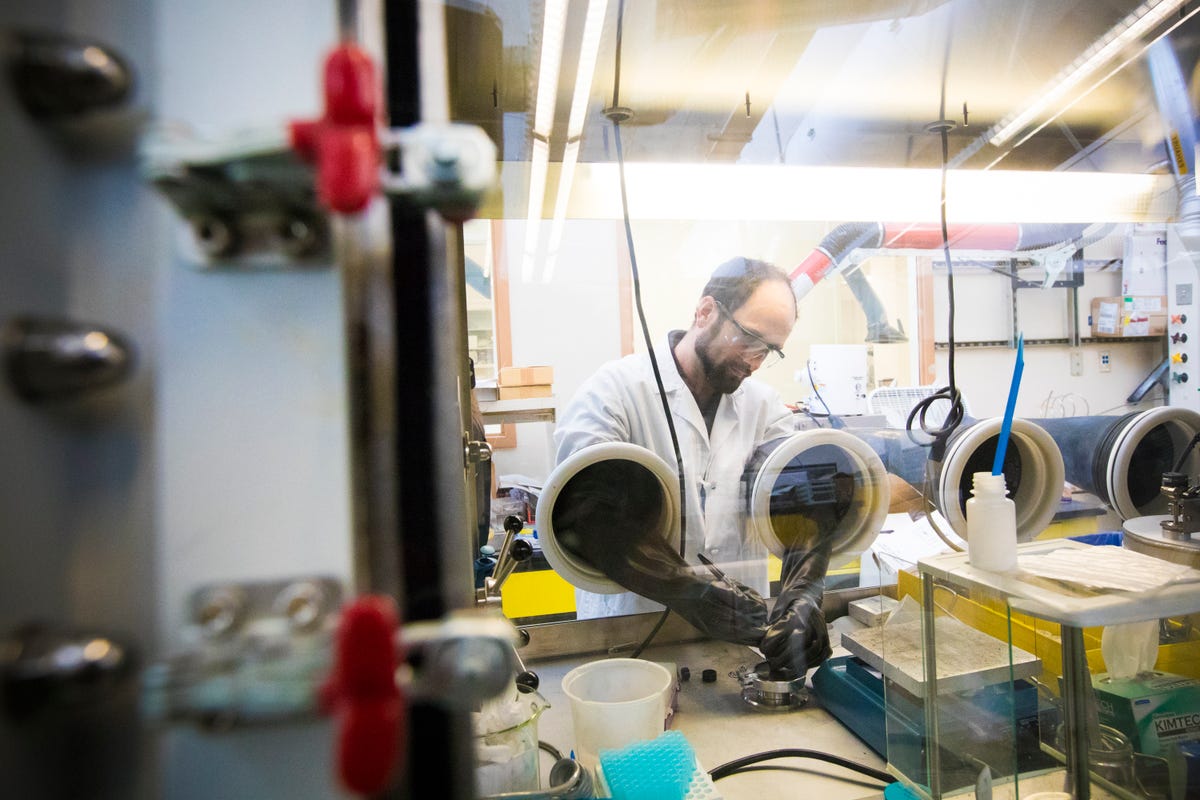HP Labs: From basic chemistry to better printing
At HP Labs in Palo Alto, California, researchers work on the future of printing, computing, and security. Here's a look within.

Glove boxes let researchers tinker with materials that need to be isolated from ordinary air's reactive oxygen gas.
In the Chemistry Lab, HP is engineering new approaches to materials on the molecular level to innovate new technologies that make broad impacts.
HP has projects going on 3D printing technology that can change material composition so that different products can have properties like flexibility, electrical conductivity and transparency.
3D Printing Lab Research Engineer Aja Hartman sorts through data at HP Labs in Palo Alto, Calif.
HP Labs has repurposed the company's inkjet printing technology so it can assemble structures out of living cells for tissue testing.
At HP Labs, researchers perform everything from basic physics and chemistry research to product development -- but the idea is to benefit from the company's work in printing and computing. This model of HP Lab's nanofingers, thousands of times larger than the real-world item, shows the pillars that can effectively grasp individual molecules for analysis.
The actual nanofinger chip, seen here, holds thousands of tiny pillars which grab a hold of individual molecules.
In the Palo Alto lab, HP is repurposing more traditional technologies in a bio-lab with related microfluidics that squirt liquids other than inkjet ink. Here, researchers might print out constructions of different cells to mimic tissue types.
HP's Indigo printing systems can spit out 240 full-color pages a minute for high-end products like custom photo books -- but they consume expensive ink by the jug.
HP's massive Indigo printers, which can cost $500,000, are used to print photo books and other high-quality images at high speed. HP Labs is working to make components last orders of magnitude longer, with the ultimate goal of becoming as durable as the whole product.
Keith Moore, the vice president leading HP Labs' 2D and 3D printing work, explains how printing technology has improved by a factor of two about every two years -- for example, by being able to pack in smaller jets that can print with ever-finer detail.

